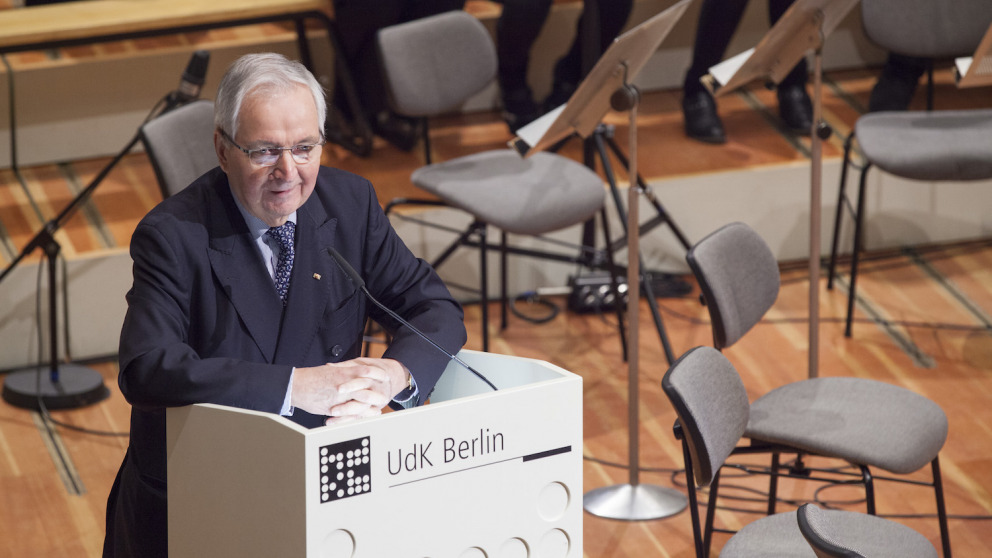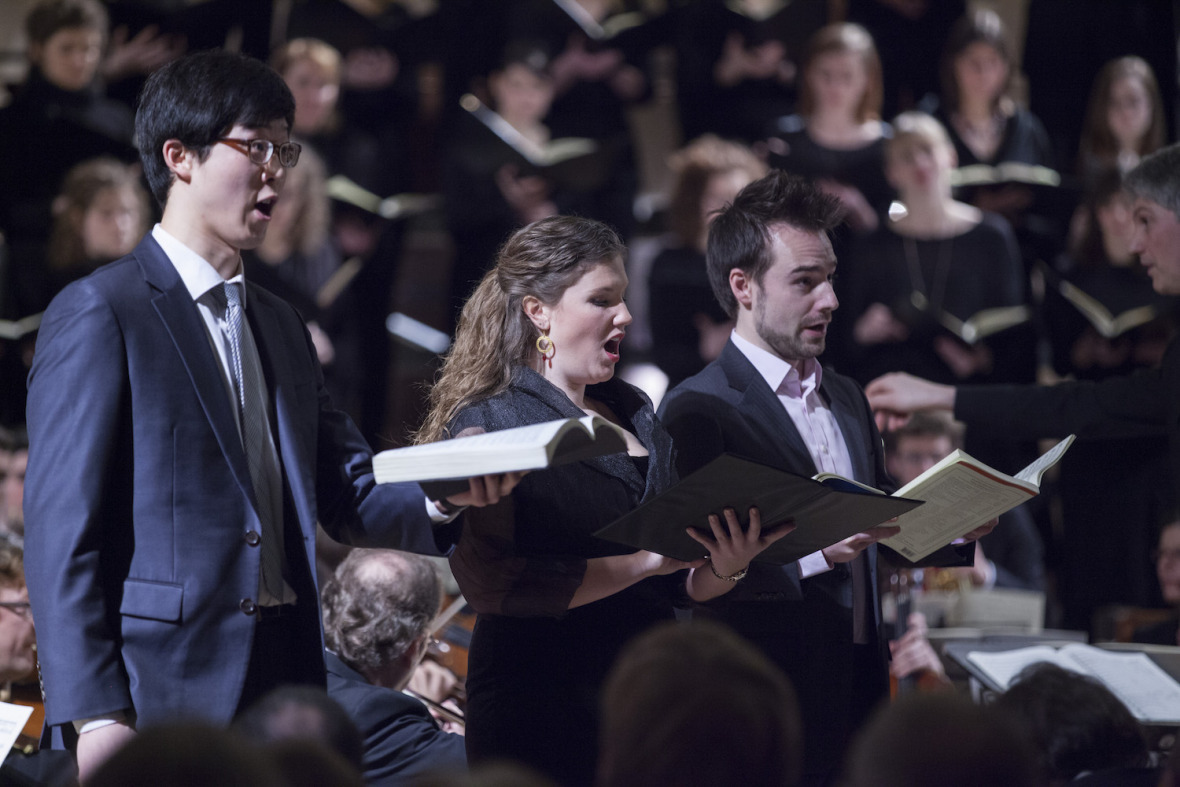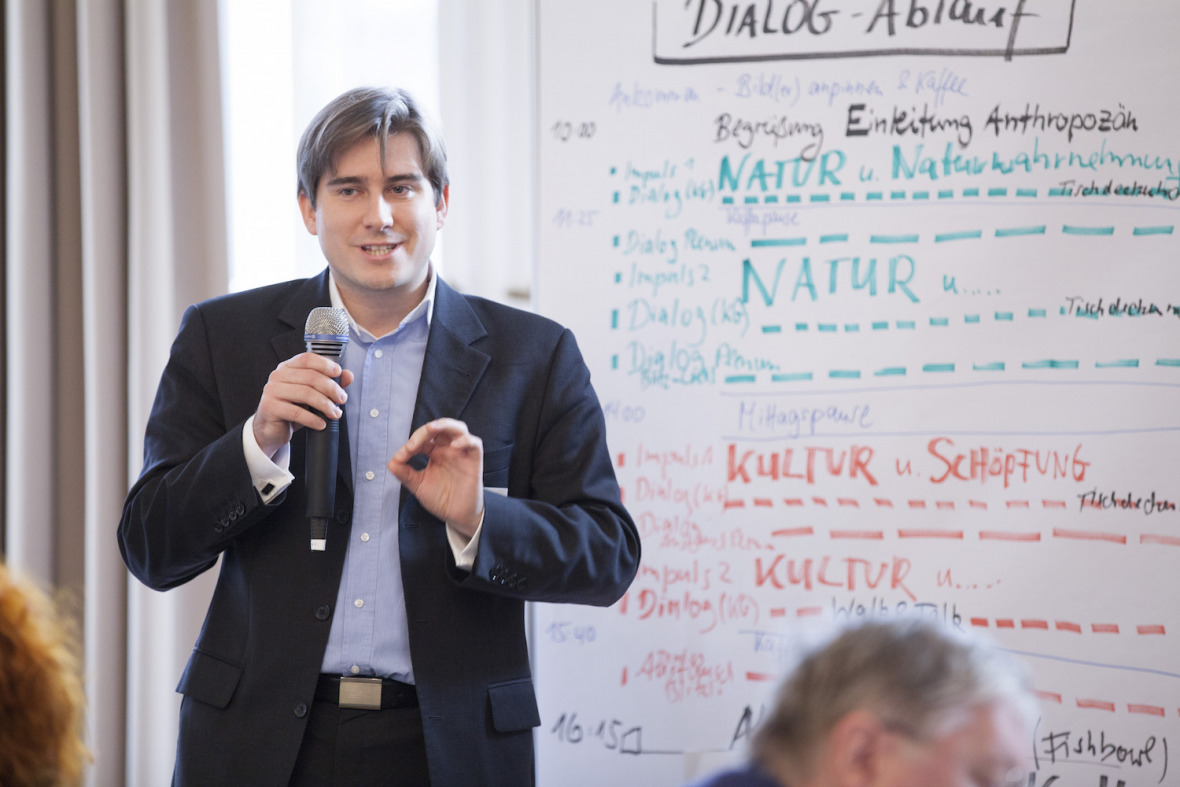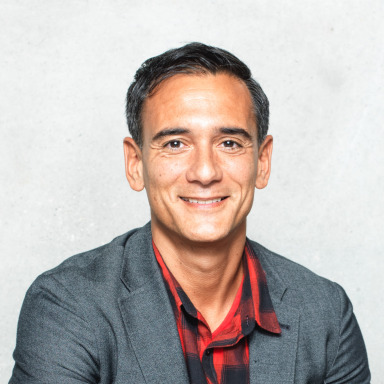Headline:
Researchers, Artists and Members of the Public Discuss the Relationship between People and Nature in the Anthropocene

Since it was first coined by the atmospheric chemist Paul Crutzen fifteen years ago, the term ‘Anthropocene’ has become a much-discussed buzzword in expert circles. Scientists are still debating whether people have indeed changed the Earth to such an extent that we can talk about a new era in the history of the planet. What is certain is that the pace of phenomena like deforestation, urbanisation and climate change has accelerated greatly since the end of the Second World War. How do we deal with the risks this creates? What do we need to change about our relationship to other people, animals and plants? With their project “Paradise reloaded? – Creation in the Anthropocene”, the IASS, the choir of the Junges Ensemble Berlin (JEB) and theUniversity of the Arts (UdK) Berlin got to grips with these questions from 6 to 8 February. The aim was to discuss the Anthropocene as a societal and cultural issue rather than a purely scientific matter. The transdisciplinary communications project was inspired by Joseph Haydn’s Oratorio “The Creation”.

“This work expresses an empathetic optimism with regard to our relationship to nature. We were interested in finding out to what extent we ourselves – the project organisers, the audience and the general public – still share this optimism and empathy, these notions of order,” explained the project coordinator and IASS researcher Manuel Rivera. In the JEB, the IASS found a project partner that specialises in performing works with a political and social dimension under the baton of its conductor Frank Markowitsch. Together with the Prometheus Ensemble Berlin and three school choirs from Berlin and Hamburg, the JEB rose to the challenge of bringing Haydn’s “The Creation” into the present. Performances of the work took place on 6 February in the Gethsemane Church in Prenzlauer-Berg and on 8 February in the concert hall of the University of the Arts Berlin. IASS researchers also participated in one of the rehearsals.
On 7 February researchers from various disciplines – e.g. biology, theology and musicology – as well as creative artists and interested members of the public reflected on how the relationship between humanity and nature has changed since Haydn’s time during a symposium at the IASS. This symposium gave pride of place to dialogue and exchange among the participants: instead of longer lectures, the speakers merely gave ‘impulses’ for discussion in small groups.

Physicist Thomas Bruhn, a project scientist at the IASS, referred in his introduction to the fact that many Earth system indicators – e.g. climate change, ocean acidification and the loss of biodiversity – have been increasing considerably since 1800, with exponential growth since 1950. Bruhn claimed that people have become “the dominant force in an Earth system” that had hardly changed at all in the 10 000 years prior to that. With their massive interventions, they are putting the existence of future generations at risk.
Martin Gorke from Greifswald University estimated that around 30 000 species are dying out each year. “We are on the brink of the sixth wave of extinctions in the history of the planet,” claimed the biologist and environmental historian. But this mass extinction is setting in at a moment when there are more species than ever before. From an anthropocentric point of view, people argue for the conservation of biodiversity because species extinction threatens the survival of future generations. Representatives of a holistic model believe, on the other hand, that species should be respected for their own sake. Gorke argued that the question of whether the value of biodiversity lies in its benefits to humankind or in all species’ fundamental right to existence is crucial to future environmental protection regulations. The environmental historian Verena Winiwarter from the University of Klagenfurt did point out, however, that the discourse on the Anthropocene should not be confined to our treatment of nature. “Our image of nature is always a reflection of our self-image,” she claimed. In establishing rules for how we engage with the natural world, we must also engage with our concept of humanity.
For Jürgen Manemann, director of the Hanover Institute of Philosophical Research, a new ‘human ecology’ is a prerequisite for any comprehensive transformation towards a sustainable world. Rather than a further ‘hominisation’ of the world, a deeper humanisation of people should get underway. By strengthening the sense of possibility (Möglichkeitssinn), Manemann claimed that such a humanisation would create space for others. “We must also bequeath cultural environments to future generations,” he stressed. The publicist and curator Adrienne Goehler countered that the German education system offered few opportunities for developing this sense of possibility. After the ‘Pisa shock’, she claimed that a focus on analytical skills had been to the detriment of an aesthetic education and appealed for a “reawakening of the senses”.
In his closing speech, IASS Executive Director Klaus Töpfer emphasised the important role played by art in raising awareness of people’s place in creation and in the Anthropocene. For Töpfer, the transdisciplinary communications project was very enriching: precisely because art and science speak different ‘languages’, they can stimulate each other to explore new avenues, he claimed. A documentary film created especially for the communications project can be viewed from the end of March on our YouTube channel. A brochure summarising the project and its outcomes will also be published.
For further information, see:
- IASS Working Paper “Die Schöpfung im Anthropozän: Zwischen Natur und Kultur” (Creation in the Anthropocene: Poised between Nature and Culture)
- Photo gallery
Photos: © René Arnold/JEB/IASS
10.02.2015

